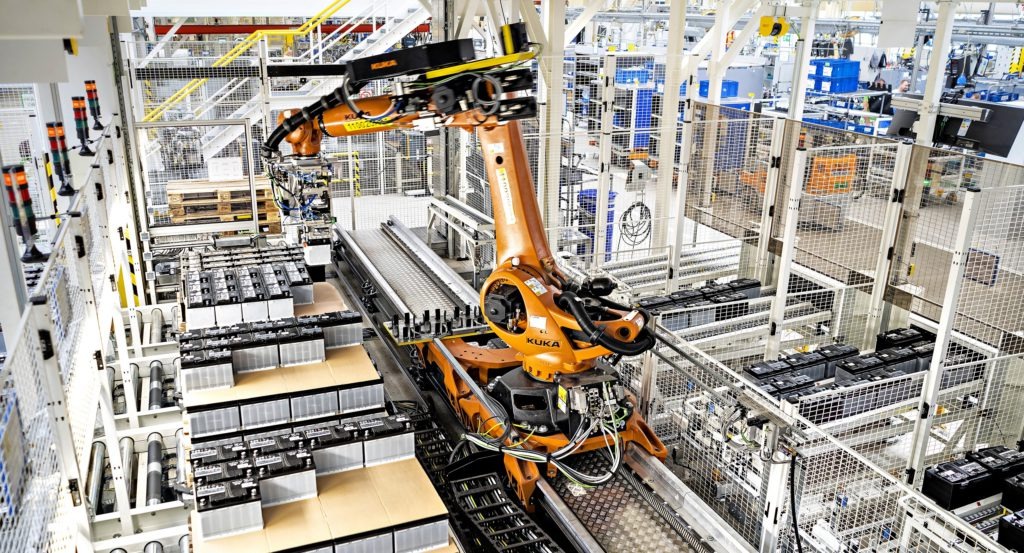Skoda makes logistical leap with robots and AI
30 September 2020

30 September 2020
While production and logistics utilising robots and artificial intelligence (AI) may sound like something out of a science-fiction film, these are core elements of Skoda’s digitalisation strategy.
The carmaker’s Kvasiny plant is now home to a robot, which feeds batteries onto production lines. Meanwhile, AI app Optikon works out the most efficient way to pack pallets into freight containers.
As the manufacturer leaps forward into Industry 4.0, the adoption of these systems looks to define Skoda’s Strategy 2025 and its digitalisation. With carmakers making enormous efforts to electrify their line-ups, there is even greater reason to evolve production lines.
Advancing Kvasiny
Skoda has been using a robot at its Kvasiny plant since July to pick starter batteries from pallets and supply them to the production line in sequence. The technology makes production processes more efficient while increasing workplace safety.
Units are placed on pallets near the assembly line, instead of being stored in a parts warehouse and fetched when needed. A robot scans the batteries with a camera to identify the correct parts for the vehicle being assembled. It then puts the right unit in transport trolleys that carry them directly to the production line.
The robot also stacks empty pallets and transport packaging and can order new starter batteries from the warehouse when needed. It moves using mobile lane guidance, while being protected by an all-around safety net and equipped with sensors to prevent collisions with staff or machinery.
After investing €450,000 in implanting the process, the carmaker is now looking to file a patent application for the system. With relatively small adjustments to the hardware, the robot will be capable of operating at other sequenced work stations in both production and logistics.
′For parts to be delivered to the production line just in sequence, a range of highly complex processes need to operate in perfect harmony,’ said David Strnad, head of brand logistics at Skoda Auto. ′By using the new handling robot at the Kvasiny plant, we have been optimising these processes, making production more efficient and thus even more precise and ultimately even faster. At the same time, this Industry 4.0 technology has further increased workplace safety in the factory. And it has made the workstations more ergonomic.’
An intelligent app
Logisticians need to ensure every inch of a 40-foot sea container is used to its maximum potential. To achieve this, Skoda has added a new tool to its team’s arsenal – Optikon. Using AI technology, the app calculates how different pallets can be loaded to use space as efficiently as possible. Optikon learns from every loading process and the expertise of Skoda Warehouse staff. This programme allowed the carmaker to save 151 container shipments and 80 tonnes of CO2 in the first six months of 2020.
Optikon uses mathematical combinatorial analysis methods to find various solutions to what is known as the ′knapsack problem’. It addresses the question of how objects can be optimally fitted into a limited space. While the classic knapsack problem only accounts for the weight and value of the items, Optikon also considers floor space, volume and when shipping has to take place.
The Skoda logistics department has been using Optikon since November 2019, in particular for loading containers shipped to Nizhny Novgorod, Russia. As well as body components, production materials like adhesives are exported to Russia from Mladá Boleslav, Czech Republic.
′This AI app is a major development step on our way to digitalising logistics and our work processes. The Optikon project makes the work of the employees in the parts warehouse easier whilst also lowering our transport costs,’ said Strnad. ′Furthermore, it has allowed us to reduce CO2 emissions because we only dispatch full containers now. Optikon therefore, also has a positive impact on our Green Future environmental strategy.’